Key takeaways:
- Effective communication and comprehension are vital in the consent process, as medical jargon can confuse patients.
- Patient emotional states significantly impact their ability to engage with consent discussions; creating a calming environment is essential.
- Active listening and allowing sufficient time for discussions can enhance patient engagement and understanding during consent.
- Adapting to cultural differences and ensuring a safe space for dialogue can improve the consent experience and foster trust.
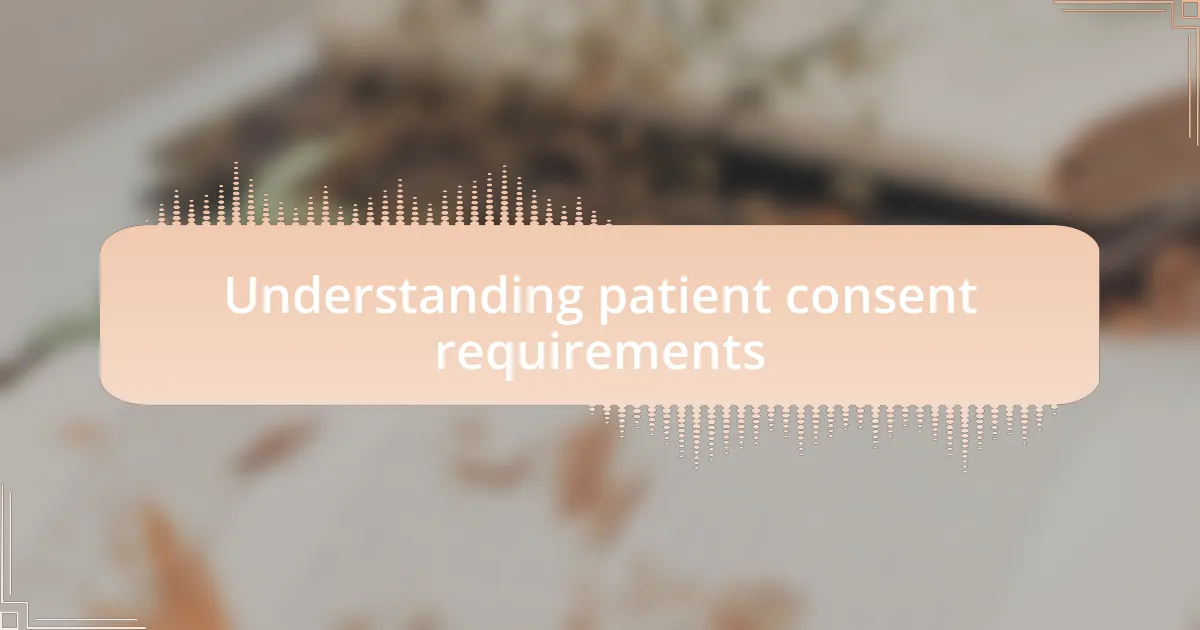
Understanding patient consent requirements
Understanding patient consent requirements can sometimes feel overwhelming, but reflecting on my own experiences, I realize it’s crucial for building trust. I remember a time when a patient looked at me with uncertainty; I made it a point to explain each step of the consent process. This not only alleviated their anxiety but also reinforced their autonomy in making informed decisions about their care.
It’s interesting how different healthcare settings can influence the complexity of consent. During my time in a busy emergency room, I encountered situations where consent was needed urgently, yet patients were often too disoriented to give it. In these moments, I learned the importance of assessing capacity—asking whether the patient could understand, retain, and weigh the information to make a choice.
I often wonder, how well do we really communicate the nuances of consent to our patients? One afternoon, a simple question from a patient about the implications of a procedure led to a deeper discussion about their values and preferences. It was a reminder that consent isn’t just a formality; it’s a dialogue that respects a patient’s autonomy and ensures they feel heard and valued in their healthcare journey.
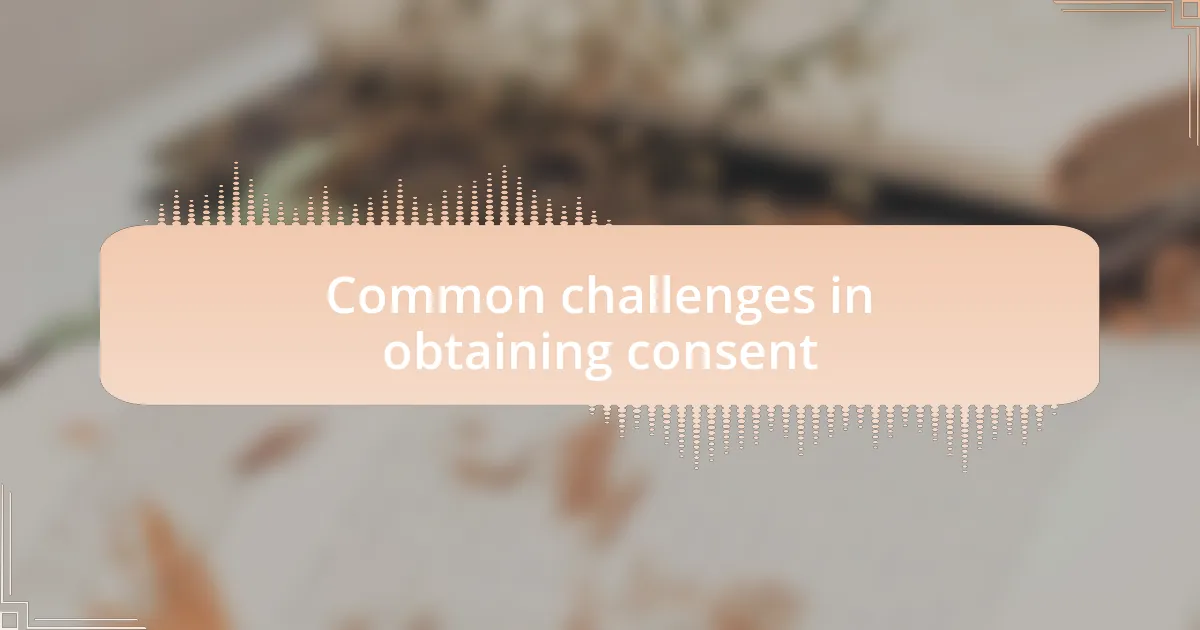
Common challenges in obtaining consent
Obtaining patient consent can present a variety of challenges, one of which is the issue of comprehension. I’ve found that medical jargon often clouds the conversation, leaving patients confused and hesitant. For instance, I recall trying to explain a procedure to a patient who looked completely lost despite my attempts to clarify; it made me realize that sometimes, we need to simplify our language and use relatable terms to bridge the gap.
Another significant hurdle is time constraints, especially in high-pressure environments like the operating room. There have been times when I’ve had only a few moments to speak with a patient before a procedure, and I felt pressured to rush through the consent process. This urgency can take away from meaningful interactions; I often left those conversations wondering if the patient truly understood what they were consenting to and if they felt empowered in their decision-making.
Emotional factors also play a crucial role in the consent process. I remember working with a patient who was understandably anxious about an upcoming treatment. Their fears made it difficult for them to focus on the consent information we were discussing. In such situations, I strive to create a calming atmosphere, asking questions to gauge their feelings and encouraging them to express their concerns. How often do we pause to consider the emotional landscape a patient navigates when giving consent? Understanding this can transform the process from a mere formality into a shared experience where patients feel supported and informed.
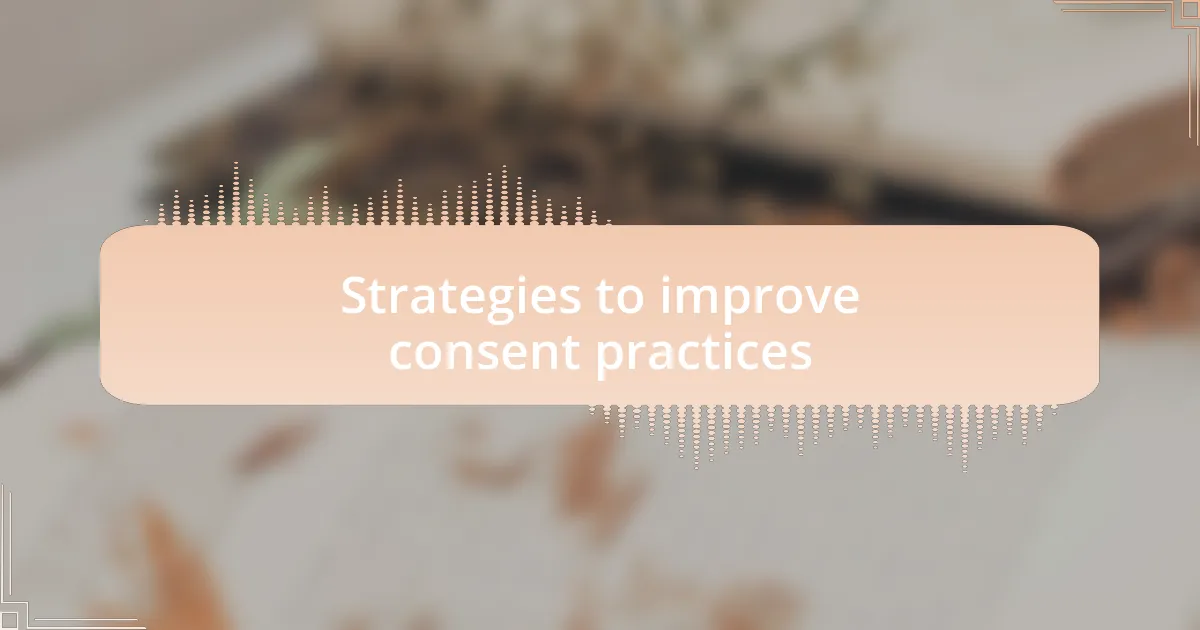
Strategies to improve consent practices
Enhancing patient consent practices can be achieved through active listening and engagement strategies. I once had a patient who responded positively when I took the time to really listen to their thoughts and concerns before discussing the procedure. By asking open-ended questions, I encouraged them to share what was on their mind, easing their anxiety and fostering a two-way conversation that empowered them in their decision-making.
Another approach is to utilize visual aids or written materials that break down complex information into digestible pieces. I’ve found that handing a patient a simple brochure with diagrams related to their treatment can be a game-changer. Not only does this provide clarity, but it also serves as a resource they can refer back to, reinforcing their understanding long after our conversation concludes. Have you ever considered how visual elements can enhance comprehension during these pivotal moments?
Lastly, ensuring that adequate time is allocated for the consent process is crucial. In my experience, when I prioritize longer, unrushed discussions, I often witness a transformation in patient engagement. I’ll never forget a moment where dedicating just an extra five minutes allowed a patient to express their worries, leading to a richer dialogue that made all the difference. How can we redefine our schedules to better accommodate these meaningful exchanges? Investing time in this way ultimately enriches the patient experience and solidifies their trust in the care we provide.
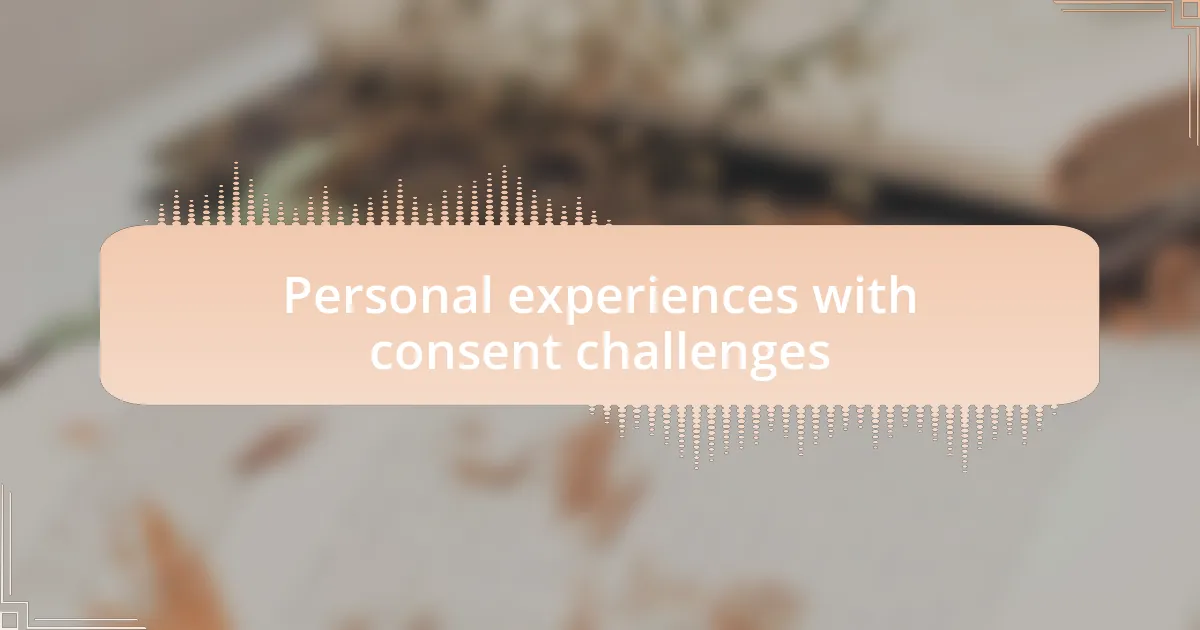
Personal experiences with consent challenges
It’s interesting how some patients may hesitate to voice their concerns about consent. I remember one particular instance with a patient who seemed withdrawn during our initial conversation. It wasn’t until I gently probed her feelings about the procedure that she revealed her fear of potential side effects, which she had initially kept to herself. It reminded me that sometimes, the most important part of consent is creating a safe space for open dialogue.
Another challenge I faced revolved around patients misunderstanding medical jargon. During a consultation about a complex surgery, I used terms that seemed clear to me but obscured many key points for the patient. After realizing this, I shifted gears and rephrased my explanation in simpler terms. The relief in their eyes was palpable once they understood the risks and benefits clearly. How often do we overlook the need for simplicity in our explanations?
I also encountered moments when a patient felt pressured to give consent. There was one situation where a patient seemed overwhelmed by family members in the room. I discreetly asked everyone to step out for a moment, and as soon as we were alone, the patient opened up about their hesitation. It reinforced my belief that consent isn’t just about signature collection; it’s about ensuring the patient feels truly heard and respected in their choices. How can we better facilitate such moments of clarity in the often hectic environment of clinical settings?
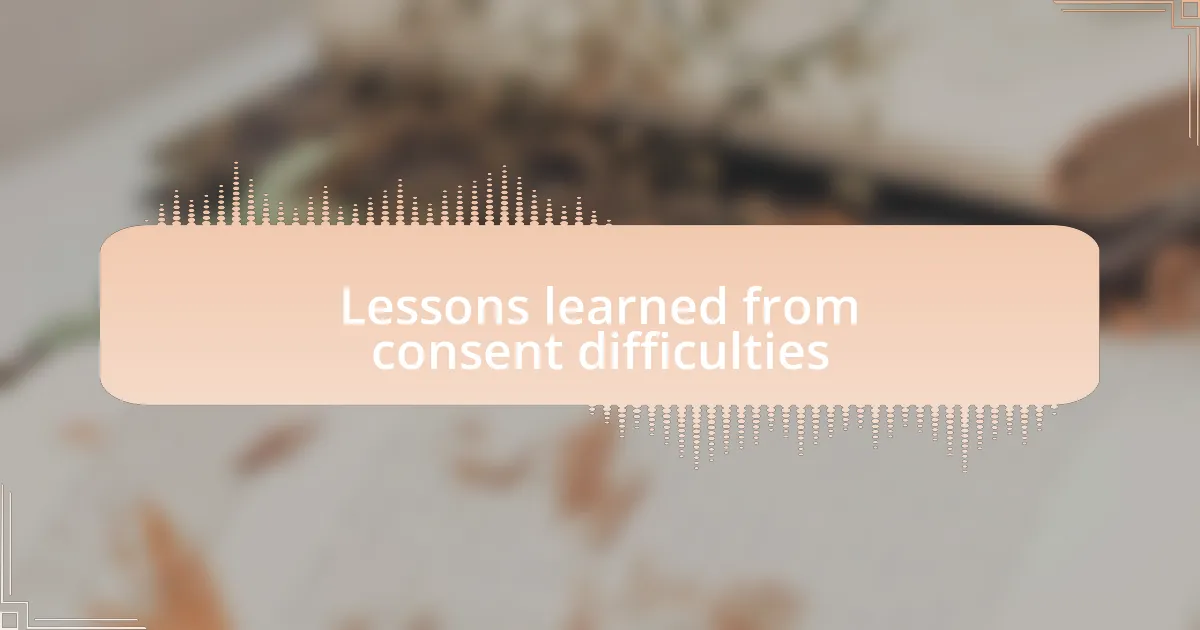
Lessons learned from consent difficulties
The complexities of obtaining informed consent have taught me the importance of active listening. I remember a particular encounter where I misjudged a patient’s understanding of the procedure. After clarifying a few points, her face lit up with a sense of relief, and I realized that my role was not only to inform but to truly listen to her concerns and affirm her feelings. How often do we take for granted the power of simply being present in those critical conversations?
Navigating cultural differences also presented challenges in consent discussions. I once worked with a patient from a culture that highly values family decision-making. Initially, he was reluctant to engage in the consent process without his family. I learned to adapt my approach, inviting family members into the conversation while still emphasizing the patient’s autonomy. I found that this not only fostered trust but also enhanced the overall understanding of the treatment options. Could it be that our willingness to adjust can lead to more meaningful consent experiences?
Lastly, I’ve recognized that time pressures can severely impact the quality of consent discussions. During one particularly busy day, I rushed through a consent form with a patient, only to find out later that they had significant misconceptions about the procedure. This experience reminded me that taking the time to engage thoughtfully with each patient can safeguard their rights and wellbeing. What might happen if we prioritized comprehensive discussions over efficiency in our fast-paced environments?